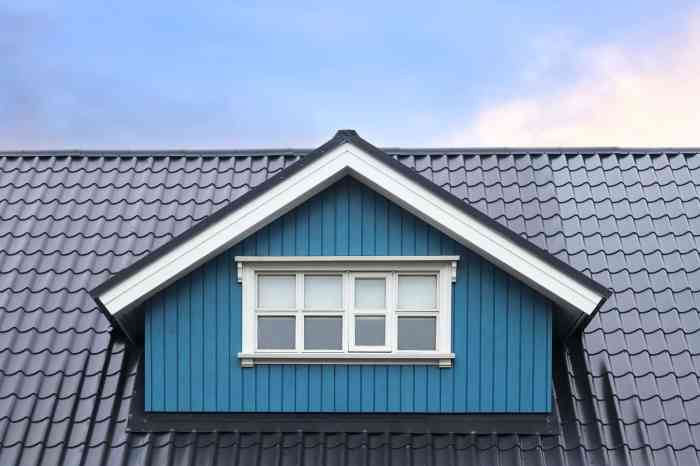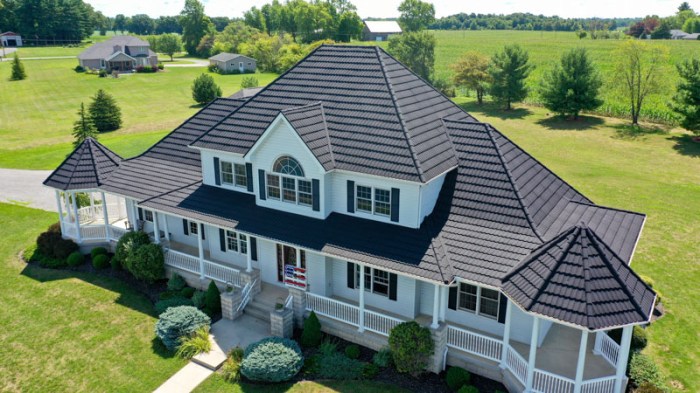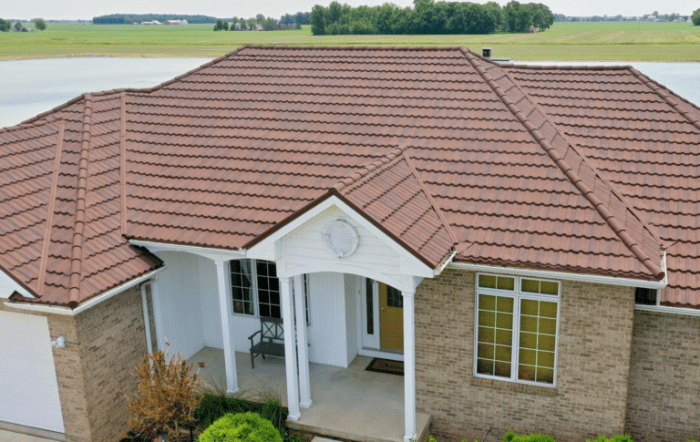When it comes to protecting your home from the elements, nothing is more crucial than having a weather-resistant roof. Erie Roofing stands out as a specialist in providing top-notch solutions for weather-resistant roofing. In this comprehensive guide, we will explore the importance of weather-resistant roofing, the various materials used, the installation process, maintenance tips, and more.
Stay tuned to learn everything you need to know about ensuring the longevity and durability of your roof.
Overview of Weather-Resistant Roofing
Weather-resistant roofing is crucial for protecting homes and buildings from the elements, such as rain, wind, snow, and extreme temperatures. A sturdy roof that can withstand harsh weather conditions is essential for maintaining the structural integrity of a property and keeping its occupants safe and comfortable.
Erie Roofing specializes in providing weather-resistant roofing solutions that are designed to withstand the toughest weather conditions. With high-quality materials and expert craftsmanship, Erie Roofing ensures that their roofs are durable, long-lasting, and able to protect homes and buildings from all types of weather-related damage.
Benefits of Investing in a Weather-Resistant Roof
- Increased Durability: Weather-resistant roofing materials are designed to be more durable and long-lasting than traditional roofing materials, reducing the need for frequent repairs or replacements.
- Enhanced Protection: A weather-resistant roof provides better protection against leaks, water damage, mold growth, and other issues caused by exposure to harsh weather conditions.
- Energy Efficiency: By sealing out drafts and maintaining a consistent temperature inside the building, a weather-resistant roof can help improve energy efficiency and reduce heating and cooling costs.
- Higher Property Value: Investing in a weather-resistant roof can increase the overall value of a property, as potential buyers are more likely to be attracted to a home with a roof that is built to last and withstand the elements.
Types of Weather-Resistant Roofing Materials

When it comes to weather-resistant roofing, the choice of materials plays a crucial role in ensuring the durability and longevity of the roof. Different materials offer varying levels of protection against harsh weather conditions.
Asphalt Shingles
Asphalt shingles are one of the most popular roofing materials due to their affordability and ease of installation. They are durable and can withstand various weather elements such as rain, snow, and wind. The granules on the surface of asphalt shingles help to reflect UV rays, providing additional protection against sun damage.
Metal Roofing
Metal roofing is known for its exceptional durability and longevity. It can withstand extreme weather conditions, including heavy rain, strong winds, and hail. Metal roofs are resistant to fire, mold, and mildew, making them a great choice for weather-resistant roofing.
Clay Tiles
Clay tiles are a classic roofing material that offers excellent weather resistance. They are resistant to fire, insects, and rot, making them ideal for areas with high humidity or salt air. Clay tiles can withstand harsh weather conditions such as heavy rain, strong winds, and UV exposure.
Slate Roofing
Slate roofing is highly durable and known for its longevity. It is resistant to fire, rot, and insect damage, making it a great option for weather-resistant roofing. Slate roofs can withstand extreme weather conditions, including heavy snow loads and high winds.
Wood Shingles
Wood shingles provide a natural and rustic look to a roof while offering good weather resistance. They are treated to be resistant to rot, mold, and insect damage. Wood shingles can withstand moderate weather conditions but may require more maintenance compared to other materials.
Installation Process for Weather-Resistant Roofing

When installing weather-resistant roofing, several key steps need to be followed to ensure a successful and durable outcome.
Preparation and Planning
- Inspect the current roof for any damage or issues that need to be addressed before installation.
- Choose the appropriate weather-resistant roofing material based on the climate and specific needs of the building.
- Acquire all necessary permits and approvals before starting the installation process.
Removal of Old Roofing
- Remove the existing roofing material carefully to avoid damaging the underlying structure.
- Inspect the roof deck for any signs of water damage or rot and make repairs as needed.
Installation of Weather-Resistant Roofing
- Start by laying down a waterproof underlayment to protect the roof deck from moisture.
- Install the weather-resistant roofing material according to the manufacturer's instructions, ensuring proper overlap and sealing of seams.
- Secure the roofing material in place using appropriate fasteners to withstand strong winds and other weather elements.
Final Inspections and Clean-Up
- Inspect the finished roof to ensure all components are properly installed and sealed.
- Clean up any debris or waste from the installation process to leave the property in good condition.
Maintenance Tips for Weather-Resistant Roofing
Maintaining a weather-resistant roof is essential to ensure its longevity and effectiveness in protecting your home. Here are some tips to help you keep your weather-resistant roof in top condition:
Maintenance Schedule for Weather-Resistant Roofs
- Inspect your roof at least twice a year, preferably in the spring and fall, to check for any signs of damage or wear.
- Clean debris such as leaves, branches, and dirt from the roof regularly to prevent clogging and water damage.
- Trim overhanging branches to prevent them from rubbing against the roof and causing damage.
- Check for loose or missing shingles and replace them promptly to maintain the integrity of the roof.
Common Issues and How to Address Them
- Leaks: Inspect the roof for signs of leaks such as water stains on the ceiling and address them immediately by repairing the damaged area or replacing the affected shingles.
- Mold and mildew: Clean the roof regularly to prevent the buildup of mold and mildew, which can cause damage to the roof material.
- Cracked or blistered shingles: Replace damaged shingles to prevent water infiltration and further damage to the roof structure.
Tips to Prolong the Lifespan of a Weather-Resistant Roof
- Apply a protective coating to the roof to enhance its weather resistance and prolong its lifespan.
- Ensure proper attic ventilation to prevent moisture buildup, which can lead to mold growth and damage to the roof.
- Schedule regular professional inspections to identify and address any issues before they escalate and cause extensive damage.
Last Point

In conclusion, Weather-Resistant Roofing by Erie Roofing offers unmatched protection and longevity for your home. By investing in a weather-resistant roof, you're not just safeguarding your property but also ensuring peace of mind for years to come. Trust Erie Roofing to provide you with the expertise and quality craftsmanship needed to weather any storm.
Top FAQs
What are the benefits of investing in weather-resistant roofing?
Investing in weather-resistant roofing ensures longevity, durability, and protection against harsh weather conditions such as rain, wind, and snow.
Which materials are commonly used in weather-resistant roofing?
Common materials include asphalt shingles, metal roofing, clay tiles, and slate. Each material offers unique benefits in terms of durability and weather resistance.
How can I prolong the lifespan of my weather-resistant roof?
Regular inspections, prompt repairs, and following a maintenance schedule are key to prolonging the lifespan of your weather-resistant roof. Keeping gutters clean and addressing any issues promptly can also help.







